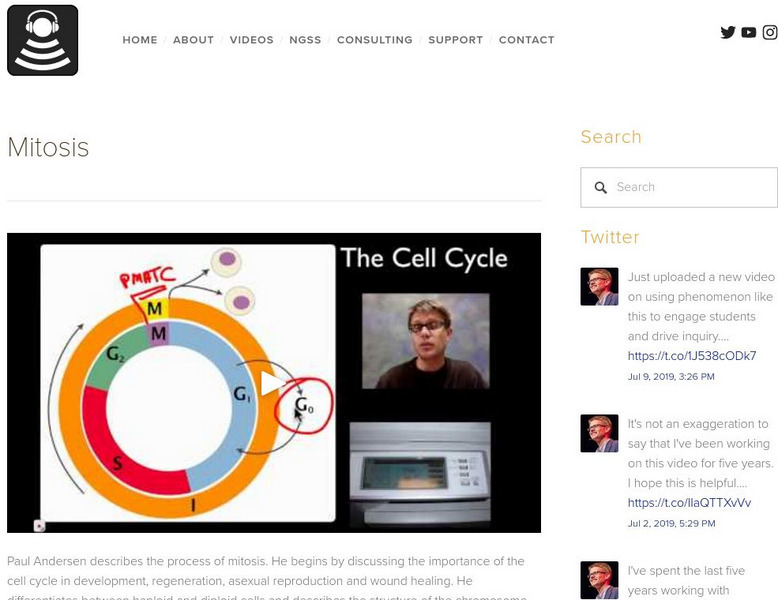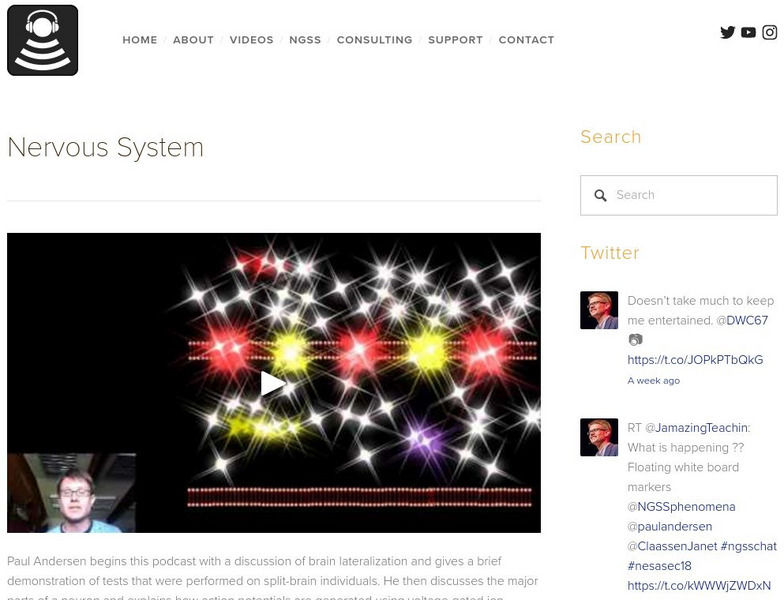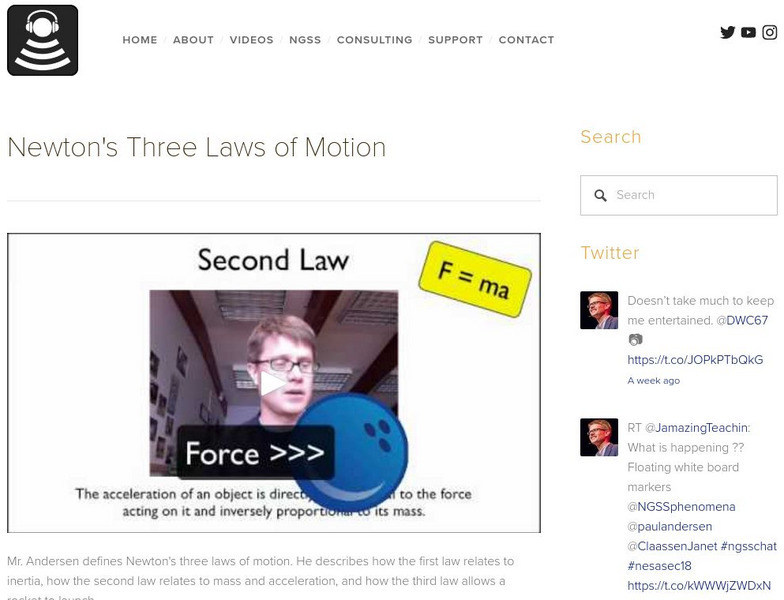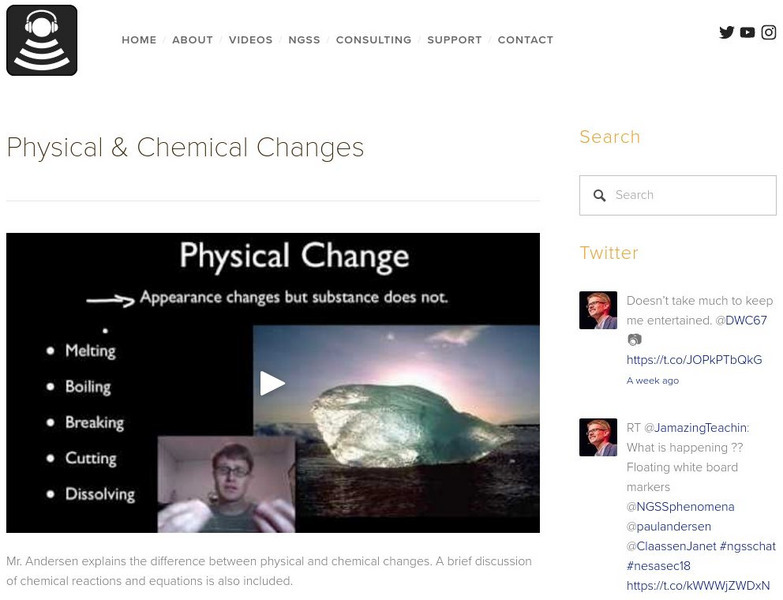Hi, what do you want to do?
Bozeman Science
Bozeman Science: Limiting Reactants & Percent Yield
Mr. Andersen explains the concept of a limiting reactant (or a limiting reagent) in a chemical reaction. He also shows you how to calculate the limiting reactant and the percent yield in a chemical reaction.
Bozeman Science
Bozeman Science: Lipids
In this video, Paul Andersen describes the lipids (of the fats). He explains how they are an important source of energy but are also required to cell membranes. He explains how the hydrocarbon tails in triglycerides contain energy...
Bozeman Science
Bozeman Science: Structure & Function
How do the structures of organisms enable life's functions? Benchmarks for grades 2, 5, 8 and 12 are included.
Bozeman Science
Bozeman Science: Information Processing
An organism's ability to sense and respond to its environment enhances its chance of surviving and reproducing. Animals have external and internal sensory receptors that detect different kinds of information, and they use internal...
Bozeman Science
Bozeman Science: Social Interactions & Group Behavior
In this video, Paul Andersen explains the importance of social interactions and group behavior. Organisms live in groups because it overs them greater success and has been selected for through natural selection. Some groups are stable...
Bozeman Science
Bozeman Science: Evidence of Common Ancestry & Diversity
In this video, Paul Andersen describes several types of evidence for common ancestry. This evidence is contained in the fossils, embryos and molecules of living organisms. Even though life on our planet is incredibly diverse there are...
Bozeman Science
Bozeman Science: Adaptation
In this video, Paul Andersen defines adaptations and explains how organisms can become better adapted to there surroundings using the process of natural selection. Specific examples of adaptations, like coat color in rock pocket mice, as...
Bozeman Science
Bozeman Science: Matter
Mr. Andersen gives a brief description of matter. The five states of matter are also discussed.
Bozeman Science
Bozeman Science: Meiosis
Paul Andersen explains how the process of meiosis produces variable gametes. He starts with a brief discussion of haploid and diploid cells. He compares and contrasts spermatogenesis and oogenesis. He explains how each person is...
Bozeman Science
Bozeman Science: Meselson Stahl Experiment
Paul Andersen explains how the Meselson-Stahl experiment was used to prove that DNA copied itself through a semi-conservative process. They grew E. coli in a medium containing heavy nitrogen (N-15). They then added the E. coli to a...
Bozeman Science
Bozeman Science: Mitosis
Paul Andersen describes the process of mitosis. He begins by discussing the importance of the cell cycle in development, regeneration, asexual reproduction and wound healing. He differentiates between haploid and diploid cells and...
Bozeman Science
Bozeman Science: Mole Conversions
Mr. Andersen shows you how to convert moles to grams and moles to molecules.
Bozeman Science
Bozeman Science: Mutations
Paul Andersen describes the major mutations found in the living world. He starts with an analogy comparing the information in DNA with the information in a recipe. Changes in the DNA can result in changes to the protein, like changes in...
Bozeman Science
Bozeman Science: Naming Compounds Part 2
Mr. Andersen shows you how write the chemical formula for chemical names.
Bozeman Science
Bozeman Science: Nervous System
Paul Andersen begins this podcast with a discussion of brain lateralization and gives a brief demonstration of tests that were performed on split-brain individuals. He then discusses the major parts of a neuron and explains how action...
Bozeman Science
Bozeman Science: Newton's Three Laws of Motion
Mr. Andersen defines Newton's three laws of motion. He describes how the first law relates to inertia, how the second law relates to mass and acceleration, and how the third law allows a rocket to launch.
Bozeman Science
Bozeman Science: Nuclear Reactions
Mr. Andersen contrasts nuclear reactions to chemical reactions. He explains the four main forces of nature; including gravity, electromagnetism, strong, and weak nuclear forces. He also explains how fusion differs from fission.
Bozeman Science
Bozeman Science: Nucleic Acids
Paul Andersen explains the importance and structure of nucleic acids. He begins with an introduction to DNA and RNA. He then describes the important parts of a nucleotide and shows how they are connected through covalent and hydrogen...
Bozeman Science
Bozeman Science: Obtaining, Evaluating & Communicating Information
Information Scientists and Engineers spend over half of their working day reading, evaluating and producing text. Therefore it is important that we produce students that have a high level of scientific literacy.
Bozeman Science
Bozeman Science: Osmoregulation
Paul Andersen explains how organisms regulate their internal osmolarity or not. He starts with a brief description of osmosis and why it is important for animal cell to be surrounded by an isotonic solution. He then explains how...
Bozeman Science
Bozeman Science: Osmosis Demo
Mr. Andersen gives a brief description of osmosis. He explains how water moves from a hypotonic to a hypertonic solution across a semipermeable membrane. The video ends with a time-lapse demon in class.
Bozeman Science
Bozeman Science: Patterns
Paul Andersen explains patterns and describes why pattern recognition is an important skill in science and engineering. He begins by discussing patterns in nature, including snowflakes, flower petals, seasons and nucleotides in DNA. He...
Bozeman Science
Bozeman Science: Photosynthesis Lab Walkthrough
Mr. Andersen shows you how to sink leaf chads in preparation for the AP Biology photosynthesis lab. An empty syringe is used to remove gas from the leaves before the lab. As the chloroplasts absorb light they produce oxygen bubbles which...
Bozeman Science
Bozeman Science: Physical & Chemical Changes
Mr. Andersen explains the difference between physical and chemical changes. A brief discussion of chemical reactions and equations is also included.




























